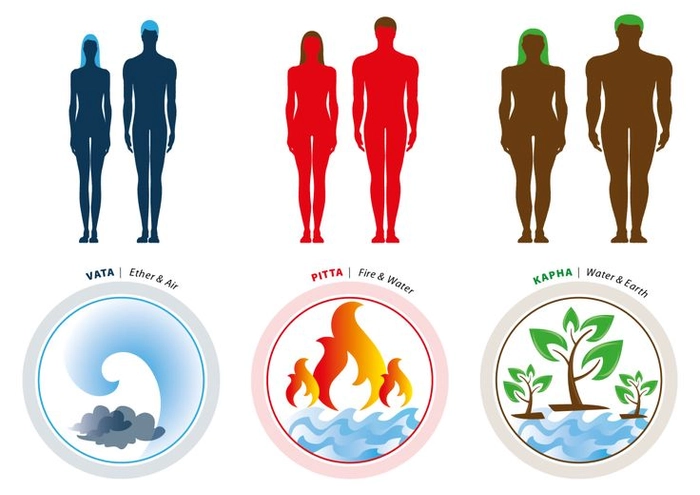🧘♀️ Ayurvedic Skin Typing: The Dosha-Based Approach
Ayurveda, the ancient Indian system of holistic medicine, classifies individuals into three constitutional types or doshas—Vata, Pitta, and Kapha. These doshas influence everything from digestion to skin characteristics. Understanding your Ayurvedic skin type helps you choose natural remedies that restore balance and promote radiant skin.
🔹 Vata (Air + Ether)
- Skin Traits: Thin, dry, cool to the touch, prone to fine lines and early aging.
- Signs of Imbalance: Flakiness, rough texture, increased sensitivity.
- Ayurvedic Remedies:
- Sesame Oil: Deeply nourishing and warming.
- Ashwagandha: Supports collagen and skin repair.
- Aloe Vera: Calms and hydrates.
🔹 Pitta (Fire + Water)
- Skin Traits: Soft, warm, fair, and sensitive; prone to redness and breakouts.
- Signs of Imbalance: Inflammation, acne, sensitivity.
- Ayurvedic Remedies:
- Sandalwood: Cooling and anti-inflammatory.
- Neem: Antibacterial and detoxifying.
- Turmeric: Reduces blemishes and evens skin tone.
🔹 Kapha (Earth + Water)
- Skin Traits: Oily, thick, cool, resilient; often has enlarged pores.
- Signs of Imbalance: Congestion, dullness, excessive oiliness.
- Ayurvedic Remedies:
- Manjistha: Enhances circulation and detoxifies.
- Tulsi (Holy Basil): Balances oil and purifies the skin.
🧪 Modern Dermatology: Understanding Skin Types and Active Ingredients
Modern dermatology categorizes skin into five key types: Normal, Dry, Oily, Combination, and Sensitive. Each type requires specific care and targeted active ingredients for optimal skin health.
🔹 Dry Skin
- Characteristics: Flaky, tight, and rough texture.
- Key Actives:
- Ceramides: Rebuild the skin’s barrier.
- Hyaluronic Acid: Attracts and retains moisture.
- Squalane: Light but deeply hydrating.
🔹 Oily Skin
- Characteristics: Shiny appearance, prone to acne and blackheads.
- Key Actives:
- Salicylic Acid: Clears pores and reduces breakouts.
- Niacinamide: Regulates oil production and brightens.
- Tea Tree Oil: Natural antimicrobial.
🔹 Combination Skin
- Characteristics: Oily in the T-zone, dry/normal elsewhere.
- Key Actives:
- Aloe Vera: Lightweight hydration.
- Zinc PCA: Balances sebum and soothes irritation.
🔹 Sensitive Skin
- Characteristics: Reactive, prone to redness and irritation.
- Key Actives:
- Colloidal Oatmeal: Calms and protects the barrier.
- Chamomile Extract: Soothing and anti-inflammatory.
- Fragrance-Free Formulas: Essential to prevent flare-ups.
🌿 Bridging Ayurveda and Modern Science: A Holistic Approach
Combining Ayurvedic principles with modern dermatology creates a powerful synergy in skincare. Here's how to approach treatment holistically:
|
Skin Type |
Ayurvedic Dosha |
Key Remedies |
Modern Actives |
|
Dry |
Vata |
Sesame oil, Aloe, Ashwagandha |
Hyaluronic acid, Squalane |
|
Sensitive |
Pitta |
Sandalwood, Neem, Turmeric |
Niacinamide, Colloidal Oatmeal |
|
Oily |
Kapha |
Manjistha, Tulsi |
Salicylic acid, Tea tree oil |
📌 Conclusion
By understanding your skin through both Ayurvedic wisdom and dermatological science, you can create a skincare routine that’s truly customized. Whether you're looking to balance your dosha or address specific conditions with clinically backed ingredients, this integrative approach empowers you to achieve healthier, more radiant skin.

